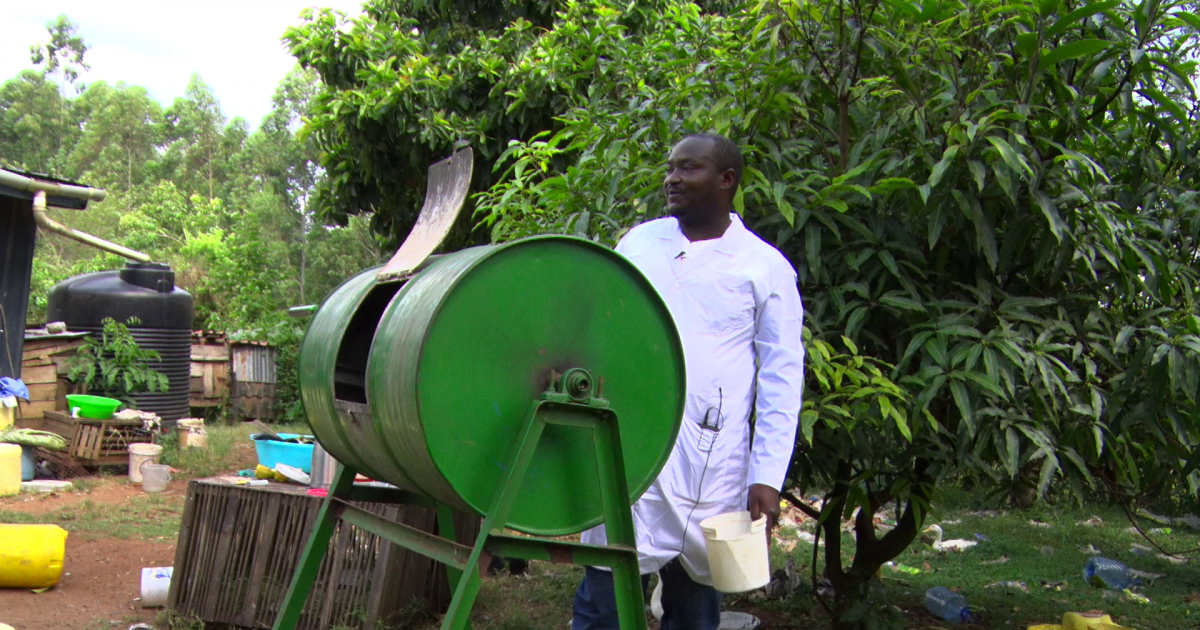A fish farmer in Migori County has opted for aquatic Azolla, a natural fish feed that is highly nutritious and protein-rich.
Azolla is an aquatic fern with between 20 to 30% protein that contains essential amino acids and minerals making it one of the best feeds compared to commercial ones.
Samora Mwamba, a fish farmer from Nyakwarasana aqua farm in Suna West Sub County-Migori says that he has been using Azolla to feed his fish, which comprises Tilapia and catfish.
Mwamba who is a beneficiary of the Aquaculture Business Development Programme (ABDP) notes that the usage of Azolla has reduced his feeding expenses by nearly half with double profits.
ABDP has been supporting smallholder fish farmers involved in fish farming along the segments of the aquaculture value chain to promote fish production in the country.
The farmer who owns 10 fish ponds on his farm, each with a capacity of producing between 500 to 600 kilogrammes depending on the type of fish; notes that usage of Azolla has increased his productivity that initially used to be between 300 to 400 Kilogrammes per pond.
He says that Azolla is a good replacer of protein from costly sources such as fish oil and fish meal that are heavily dependent on the feeding behaviours of the fish species.
However, the fish farmer acknowledges that one of the biggest challenges in fish farming is the high costs of commercial feeds that make it an expensive affair, especially for small-scale fish farmers.
He stated that Azolla is the cheapest form of feed and only requires a small pond and organic manure for its growth; making it readily available, cost-effective and sustainable in the long run.
The plant can produce nine tonnes of protein per hectare of pond per year making it an economical enterprise in fish feed production. He addeded that Azolla matures in three weeks and can be harvested forever making it an economical venture in fish feeding programmes.
“I am encouraging small-scale farmers to embrace the growth of Azolla to reduce their commercial feed dependency and realise meaningful profits”, disclosed Mwamba.
He, however, disclosed that fish farmers who have grown Azolla should be keen to establish the growth rate of the aquatic plant and any reduction in quantity should be boosted with the addition of organic mature.
Mwamba also adds that when harvesting the aquatic plant, a farmer should only harvest a quarter of the pond, then spread the rest to cover the entire pond to ensure continuity of the Azolla plant.
The advantage of the Azolla plant is its ability to be harvested daily which helps to save additional costs of fish feeds.
According to the Journal of Materials and Environmental Science (2022) fish fed with Azolla meal showed comparatively more weight gain and greater increase in length. The journal also noted that the body protein content was found to be highest in fish fed with Azolla.
Apart from having high levels of proteins, Azolla also contains small amounts of calcium, phosphorus, Iron and Manganese. Mwamba adds the aquatic plant can also be used to feed livestock and poultry either in fresh form or dry, making it a universal feed in the food production value chain.
Unlike many fish farmers, Mwamba does not use spade to mix fish feeds as he has invested in a manual feed mixer that helps him to mix Azolla and other feeds giving him a smooth mix with the required ratios. The manual mixer can mix 100 kilogrammes of feeds within five minutes and up to a tonne in a single day making it a perfect tool in feed formulation.
His word to upcoming fish farmers is to ensure they have small water ponds or water containers dedicated to growing Azolla to cut unnecessary costs of commercial feed dependency.
By Geoffrey Makokha and George Agimba



